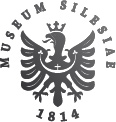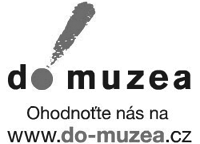ČASOPIS SZM SÉRIE B – VĚDY HISTORICKÉ
LXV/1/2016
OBSAH/CONTENTS
STUDIE/STUDIES
Hana KARTOUSOVÁ: Středověké a raně novověké hračky a součásti her v archeologické podsbírce Slezského zemského muzea / Middle Ages and Early Modern Ages Toys and Components of Games in Archaeological Sub-collection of Silesian Museum in Opava
(s.1–12)
Abstract
The article deals with physical evidence of games deposited in archaeological sub-collection of Silesian Museum
in Opava. First, it is necessary to divide the world of games into games for children and for adults. The
main element of any game is entertainment. However, children and adults have different reasons for playing.
Games for children often simulate the adult world and are connected with the process of learning. In adulthood
games have different reason; they usually do not lead towards knowledge but to the release of excess energy and
satisfaction of natural need of relaxation. In this text, the items intended for games are divided into toys for
children and parts of game sets meant for adults. The distinction between these categories may be unclear. Following
the general information and problems of interpretation, the article deals with individual types of toys or
game sets represented in the archaeological sub-collection of Silesian Museum in Opava. The text refers to
catalogue which is included at the end of the article.
Keywords: Silesian Museum, Opava, archaeological sub-collection, games for children and for adults
Klára MEZIHORÁKOVÁ: Evangelický kostel v Třinci / Evangelic Church in Třinec
(s.13–22)
Abstract
The article deals with Evangelic church in Třinec built in 1896‒1899 according to a project of Viennese architect
Julius Leisching and Teschen master builder Ludwig Kametz. This church has not been paid much attention
by art historians. Nevertheless, it is a remarkable construction – with respect to its conservative but quality historicizing
architecture significantly enriching the town complex of Třinec as well as with respect to its place in
protestant architecture with its many particularities. Evangelic church in Třinec represents also an interesting
example of in literature little reflected project activities of J. Liesching, known rather as an art historian and
museum employee.
Keywords: Třinec, Evangelic Church, 19th century architecture, Friedrich Fulda, Ludwig Kametz, Julius
Leisching
Lenka RYCHTÁŘOVÁ: Knižní svět Heleny Salichové / Book World of Helena Salichová
(s.23–34)
Abstract
The painter, writer and ethnographer Helena Salichová (1895–1975) was closely connected to the Silesian region
which enchanted her and to which she dedicated her whole life. Her collecting activities in the field of ethnography
focused on Silesian folk songs, folk costumes as well as understanding and preservation of Silesian
folk literature. She used all these collections in her literary work and as a result she published nine books in
1917–1975. She also illustrated six of the books. The illustrations fully reflect subject of the book and it is possible
to notice themes typical of free art creation of Helena Salichová.
Keywords: Helena Salichová, Silesia, collection activities, regional literature
Michael RATAJ: Sociální demokrat a novinář Emil Kutscha / Social Democrat and Journalist Emil Kutscha
(s.35–48)
Abstract
Emil Kutscha, native of Moravice, an important representative of Social Democratic Party of Germany (DSAP)
in Silesia worked in Opava in 1918–1937 and spent the remaining months till his escape from the border area
occupied by Germans on 1st October 1938 in Krnov. He was a member of the local authority in Opava and in
1923‒1938 a party district secretary; in 1930 he also became the member of the party presidium. In the 1930 he
was a member of the party directorate of printing works and publishing house Vorwärts. He deputized for
the publisher in the editorial board of the party paper „Volkspresse" published in Opava, and so he could have
influence the content of the newspapers significantly. In his articles he acted as uncompromising critic of Nazis.
Keywords: Volkspresse, Deutsche Sozial demokratische Arbeiterpartei in der Tschechoslowakei, newspaper,
Canada, journalist, Opava, Troppau, Silesia
Martin TICHÝ: Smějova slezská trilogie: strategie přepisu / Směja's Silesian Trilogy: Strategy of Rewriting
(s.49–58)
Abstract
The study deals with trilogy from Silesian village of regional writer Fran Směja: Troubled Stream (Kalný proud,
1933), What a Pity of the Country (Škoda té země, 1947), Accusation (Obžaloba, manuscript 1968). The time
interval between the individual novels of the cycle leads to the need to „rewrite" the original plan in order to
conform to the contemporary semantic frameworks. Thus we analyse the growing ideology and at the same time
also weakening literariness (manifested through expressive imagery). The analyses present the prose of
F. Směja as a whole and identify its important characteristics: schematism, didactism, fabulation insufficiency,
little attention paid to surroundings and also its grandiloquence.
Keywords: Fran Směja,literature in Silesia, Czech realistic prose
Hana Komárková: Seznamy vratislavských městských radních a přísedících městského a dvorského soudu jako prameny pro poznání strategií vládnoucích elit města / Wrocław Townsmen in the Lists of Clerical Boards. The possibilities of research into power strategies of governing elites
(s. 59–78)
Abstract
The Among the documents preserved in the local archive (Archiwum Państwowe we Wrocławiu) within the collection
of deeds issued by municipal and local government, list of assessors of The Feudal Court (Hof oder
Mannengericht) from 1380 till 1611 can be found. The interconnection of this institution bound to the
„Hauptmann" of Wrocław office with interests, aspirations and activities of representatives of "governing elites"
of Wrocław townsmen is obvious even from a cursory glance at the constitution of the boards. Selected
townsmen were members of the tribunal every year throughout its existence. The possibility to compare the lists
of townsmen participating in the above mentioned Board on the Court level and lists of councillors and assessors
of Wrocław preserved for years 1287–1744 enables the study of involvement of the most influential
townsmen families in both the institutions, both fields of administration. Thus the comparison of representation
of individual families in the bodies governing municipal government and in the feudal institution may uncover
the methods Wrocław elite used to maintain their influential position within the urban community. The following
lines should contribute to such considerations. Based on the analysis and comparison of both the lists we will
attempt to evaluate the benefits of such sources for monitoring the mechanisms of the creation and preservation
of governing elites and their strategies.
The thorough analysis of the list of assessors of The Feudal Court will be complemented with the comparison of
representation of selected Wrocław townsmen families, which, based on the previous research, could be considered
part of the governing elites or council patriciate, in the bodies of municipal government according to the
preserved as well as edited lists of councillors and assessors. The time interval of the research is determined by
the extent of the first mentioned source, i.e. list called „Hof oder Mannengericht" including years 1380–1611.
The comparison of changing or repeating names of the representatives of individual families in both the mentioned
lists will become the basis for considerations concerning mechanisms used for genesis and strengthening
the elites and not only on municipal institutional level.
Keywords: urban elites, Wrocław, municipal self-government, supreme law court of Principality, middle ages,
early modern era
KRATŠÍ PŘÍSPĚVKY/SHORT STUDIES
Dana Novotná: Nejstarší plán fortifikace města Opavy?
(s. 79–80)
RECENZE/REVIEWS
(s. 81–95)
Jiří Jung – Adam Hubáček, Architektura Hlučína. Od počátku města do roku 1938 (Jiří Neminář), Pavel Šopák, Vzdálené ohlasy, Moderní architektura českého Slezska ve středoevropském kontextu (Eva Vojkovská), Jan Al Saheb – David Pindur, Malenovice. Minulost a současnost obce pod Lysou horou (Tomáš Adamec), M. Strakoš – R. Rosová – R. Polášek, Opavské interiéry (Petr Tesař), Rainer Vogel, Familiennamen in der Altvaterregion (Petr Kozák), František Kolář, Opavské hradby (Martin Strakoš), Siegfried Ulbrecht, Germanoslavica (Ivan Puš), Branislav Dorko, 110 let městské dopravy v Opavě (Jaromíra Knapíková), Průvodce po Rakouském státním archivu ve Vídni pro českého návštěvníka (Eva Vojkovská), Eduard Mühle, Breslau und Krakau im hohen und späten Mittelalter (Petr Kozák).
KRONIKA/CHRONICLE
(s. 95–100)
Jan Obšil v Ostravském muzeu (Pavel Šopák), Konference Muzeum a 2. světová válka (Ondřej Kolář), Karl Knaflitsch 1916–2016 (Pavel Šopák), Uzavření smluv o spolupráci (Pavel Šopák).
Poslední aktualizace článku: 19.06.2020
Vytisknout celý článek







